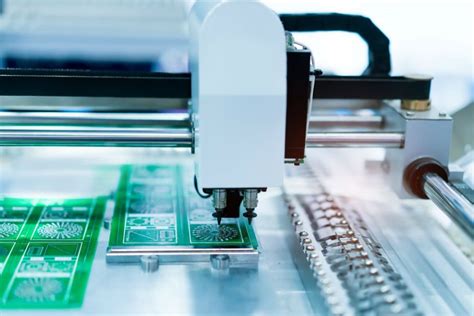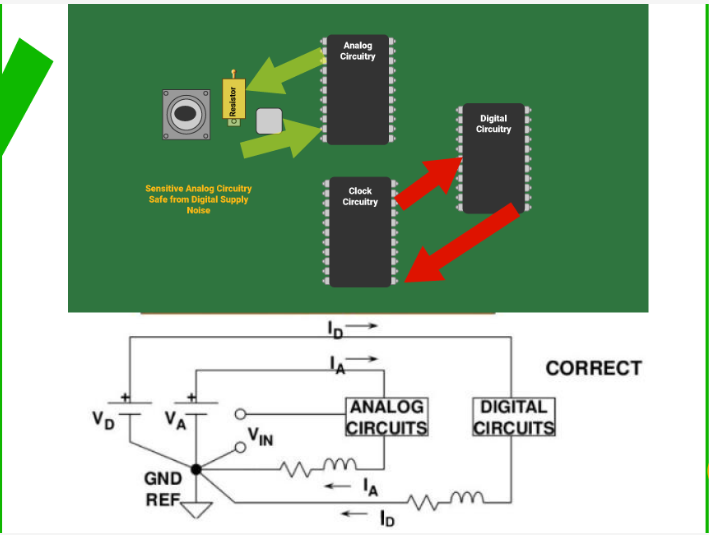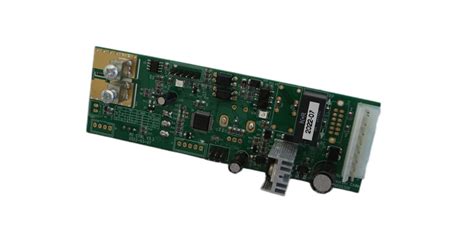Mastering Design for Manufacturing in PCB Development
Key Takeaways
When delving into Design for Manufacturing (DFM) in PCB development, it’s crucial to recognize the significant impact that well-considered design decisions have on overall manufacturability. One key takeaway is that understanding pcb manufacturing processes can save you both time and costly revisions. You should be diligent in avoiding common pitfalls that often disrupt the flow of pcb manufacturing companies. For instance, ensuring that your layouts adhere to established clearance rules can enhance the efficiency of the entire pcb manufacturing business while also reducing the pcb manufacturing cost associated with potential redesigns. Moreover, the selection of materials plays a pivotal role; using materials suited for your assembly method can lead to optimal performance without inflating costs. Always remember that collaboration with fabricators early in your design process can help you identify issues before they escalate, thereby maximizing yield and efficiency when reaching the production stage. Focus on these aspects, and you’ll be better positioned to create designs that not only meet functionality requirements but are also cost-effective and easeful for manufacturers to produce.
Understanding Design for Manufacturing (DFM) in PCB Development
In today’s competitive market, achieving efficient PCB manufacturing requires a deep understanding of Design for Manufacturing (DFM) principles. DFM is vital as it ensures that your designs are not only innovative but also practical and cost-effective. When you align your design choices with the requirements of PCB manufacturing companies, you reduce potential issues that can arise during production, ultimately impacting the PCB manufacturing cost. By applying DFM considerations early in the design process, you can minimize revisions and delays, which are often detrimental to a PCB manufacturing business. This approach involves assessing design elements such as component placement and spacing, layer stacking, and routing techniques to enhance manufacturability. A strong focus on DFM will allow you to avoid common pitfalls that can lead to suboptimal yields and expensive reworks. Therefore, embracing DFM principles not only boosts your project’s success rate but also contributes to a more sustainable manufacturing practice by reducing waste and cost inefficiencies. By prioritizing DFM, you set the stage for greater collaboration with your fabricators, ensuring that both your design intent and manufacturability are aligned from the outset.
Common Mistakes in PCB Design for Manufacturability
When venturing into PCB manufacturing, it’s essential to be aware of common mistakes that can significantly impact the success of your design. A frequent oversight is neglecting to involve PCB manufacturing companies early in the design phase. This can lead to costly revisions later, as your initial designs might not align with their production capabilities or standards. Another common pitfall is disregarding the importance of component placement and orientation, which can complicate assembly and increase PCB manufacturing costs due to inefficient production processes.
Always remember that even the most innovative designs can fail if they don’t follow basic principles of design for manufacturability (DFM). For instance, you might underestimate the significance of proper trace widths and spacing; these elements are vital for ensuring signal integrity and manufacturability. Additionally, be mindful of convoluted routing that overcrowds your board layout; this can lead to issues relating to assembly and soldering processes.
“Emphasizing thorough communication with your chosen manufacturers can pave the way for smoother production runs.”
Furthermore, maintaining adequate testing points is crucial; if overlooked, it may become increasingly difficult to troubleshoot issues during later stages of the PCB manufacturing business. By actively avoiding these common mistakes and engaging in best practices, you not only enhance your product’s manufacturability but also potentially reduce costs and lead times throughout the development cycle. Focus on clear design rules, collaborate closely with your fabricators, and ensure your design is primed for efficient production from day one.
Importance of Material Selection in DFM
When embarking on PCB manufacturing, the choice of materials can significantly impact the overall process and product quality. Selecting the right materials is crucial for optimizing manufacturability and ensuring that your design meets functional requirements while remaining cost-effective. Factors such as thermal conductivity, electrical properties, and mechanical strength influence how a PCB will perform in its intended application. By choosing high-quality substrates and components, you can minimize issues during production that may arise from inferior materials, potentially leading to increased PCB manufacturing costs. For instance, using a material that accommodates high-frequency signals can enhance signal integrity, ultimately resulting in better performance and reliability of the final product. It’s also essential to communicate your material choices with PCB manufacturing companies early in the design process; this alignment can help avoid common pitfalls associated with compatibility issues down the line. Investing time into proper material selection not only supports your PCB manufacturing business goals but also enhances product yield and consumer satisfaction, making it an essential aspect of successful DFM strategy. You can further explore various materials suitable for your designs by visiting Andwin PCB.
Implementing Clearance Rules for Optimal PCB Layout
When designing printed circuit boards (PCBs), adhering to clearance rules is crucial for ensuring the manufacturability and reliability of your product. Properly implemented clearance rules help prevent electrical shorts and mechanical failures, which can significantly affect your pcb manufacturing cost. To achieve optimal results, you should consider the different types of clearances necessary for various components on your PCB layout.
Begin by specifying clearances based on the standards set forth by pcb manufacturing companies. For example, the distance between traces, pads, and vias must meet or exceed these standards to minimize risks during the pcb manufacturing process. Below is a table illustrating some typical clearance values that can guide your layout decisions:
| Component Type | Minimum Clearance (mm) |
|---|---|
| Trace to Trace | 0.15 |
| Trace to Pad | 0.20 |
| Pad to Pad | 0.25 |
| Via to Via | 0.30 |
| Component to Edge | 0.50 |
By adhering to these clearance rules, you facilitate more consistent and efficient production processes, ultimately enhancing your overall yield—an essential aspect of running a successful pcb manufacturing business. Remember that inadequate clearances not only lead to reliability issues but also contribute significantly to increased costs by necessitating reworks or scrapping of defective boards.
Moreover, keep in mind that with rising complexity in PCB designs due to miniaturization trends, flexibility in adjusting clearance values might be required while still observing safety margins dictated by industry standards. Being proactive about these considerations allows for smoother transitions from design through production stages and positively impacts your relationship with suppliers and fabricators.
Ultimately, implementing sound clearance rules is not just a best practice but a strategic move toward improving product lifespan and reducing the likelihood of failures post-manufacturing—a critical consideration for any professional looking to succeed in the competitive realm of pcb manufacturing.
Minimum Feature Sizes and Their Impact on Manufacturability
When it comes to pcb manufacturing, understanding the importance of minimum feature sizes is crucial for achieving high yield and ensuring that your designs can be effectively produced. These feature sizes, including traces, pads, and vias, significantly influence the overall manufacturability of the PCB. If the features are too small, they may result in challenges during the production process. Many pcb manufacturing companies face difficulties with small features, which can lead to increased pcb manufacturing costs due to the need for additional quality control measures or redesigns. Additionally, pushing feature sizes to their limits can affect not only the functionality of the PCB but also its reliability during operation. Therefore, it is essential to strike a balance between design complexity and manufacturability when considering these minimum feature sizes. Accommodating industry standards while also collaborating with your fabricator can help guide your decisions on size constraints, ultimately contributing positively to your pcb manufacturing business and ensuring that you avoid common pitfalls that could hinder production efficiency. By adhering to these guidelines and recognizing the impact of minimum feature sizes on manufacturability, you are more likely to create a design that meets both performance expectations and production realities.
Ensuring Effective Solder Mask and Silkscreen Applications
When developing PCBs, one area that significantly impacts pcb manufacturing is the application of the solder mask and silkscreen layers. These elements must be implemented with precision to enhance the overall manufacturability of your design. The solder mask serves as a protective layer that prevents solder from bridging between conductive traces, which is critical in avoiding defects during the manufacturing process. If misapplied, it can lead to increased pcb manufacturing costs due to errors and rework needed to correct faulty boards. Therefore, ensure that your solder mask is accurately aligned with pads and traces while maintaining proper clearances.
Similarly, the silkscreen layer, which is used for labeling components on your PCB, should be designed to avoid interference with soldering processes and to remain within defined margins. Poorly placed or excessive silkscreen markings can hinder both assembly and functional testing phases. Collaborating closely with pcb manufacturing companies during the design phase can help identify any potential issues with your designs before production begins.
To optimize your PCB layout, utilize software tools that allow you to visualize and check both the solder mask and silkscreen application against manufacturability guidelines. This not only reduces errors but also streamlines the entire pcb manufacturing business process by assuring higher yields and lower costs. Remember that well-thought-out solder mask and silkscreen strategies are instrumental in enhancing reliability while keeping production costs manageable.
Best Practices for Collaborative Design with Fabricators
When embarking on PCB manufacturing, establishing a collaborative relationship with your fabricators is paramount. This partnership not only enhances communication but also ensures that both parties align on the specifications and requirements of the project. Start by engaging early in the design process to discuss PCB manufacturing capabilities, limitations, and potential challenges that may arise. By doing so, you can adopt a design that is optimized for manufacturability from the outset, minimizing risks and avoiding costly errors down the line. Sharing detailed information about your desired performance characteristics and tolerances helps PCB manufacturing companies provide valuable insights tailored to meet your needs.
It’s essential to consider the PCB manufacturing cost as a key factor in your design discussions. By collaborating closely with your fabricators, you might discover design adjustments that can lead to cost reductions without compromising quality. For instance, simplifying complex features or optimizing layout can improve both yield and performance, ultimately benefiting your PCB manufacturing business. Employing a transparent feedback loop fosters trust and empowers both you and your chosen fabricator to enhance the overall development process. Remember, success in PCB manufacturing is built on teamwork; so prioritize collaboration to elevate your projects!
Tools and Techniques for Evaluating DFM Guidelines
When developing your PCB designs, understanding various tools and techniques for evaluating Design for Manufacturing (DFM) guidelines is crucial for optimizing the pcb manufacturing process. Various software tools allow you to simulate your design and assess manufacturability early in the development cycle. These tools enable you to perform exhaustive DFM checks that identify potential issues related to component placement, spacing, and trace widths. It is imperative to utilize these technologies effectively; failing to do so may result in increased pcb manufacturing costs, leading to delays or the need for design revisions that could affect your overall budget and time frame.
Furthermore, collaborating with your selected pcb manufacturing companies during the initial design phase can provide invaluable insights into their capabilities and limitations. By incorporating their feedback into your design process, you can ensure that your board is easier to manufacture, minimizing complications during production. It is also beneficial to apply benchmarking methods that compare similar designs with successful outcomes in the marketplace, as this would allow you to refine your own processes based on proven performance metrics.
Ultimately, effectively evaluating DFM guidelines through these strategies and technologies not only enhances manufacturability but also bolsters the success of your pcb manufacturing business, ensuring a smoother transition from concept to production while maintaining quality and cost-efficiency.
Conclusion
In the complex realm of PCB manufacturing, understanding and implementing effective Design for Manufacturing (DFM) practices is crucial for ensuring a successful product. When you recognize the impact of design decisions on manufacturability, you position yourself to not only mitigate risks but also optimize the PCB manufacturing cost. Collaborating with experienced PCB manufacturing companies can provide insights into common industry pitfalls, allowing you to avoid mistakes that could lead to costly delays in development. Through proper selection of materials, adherence to clearance rules, and vigilant attention to minimum feature sizes, you can significantly enhance the yield of your production runs. Moreover, embracing best practices in designing together with fabricators empowers your PCB manufacturing business to thrive in a competitive market. With these strategies in mind, achieving high-quality outcomes becomes a more attainable goal as you navigate the intricacies of PCB development and manufacturing.
FAQs
What is PCB manufacturing?
PCB manufacturing refers to the process of producing printed circuit boards (PCBs), which are used to mechanically support and electrically connect electronic components. This process involves several steps, including design, material selection, and soldering.
How can I choose the right PCB manufacturing companies?
When selecting pcb manufacturing companies, consider factors such as their reputation, the range of services they offer, technology capabilities, and customer support. Research their previous projects and client reviews to ensure they meet your quality standards.
What factors influence PCB manufacturing cost?
The pcb manufacturing cost can be influenced by various elements such as material selection, complexity of the design, production volume, and additional features like plating or surface finishes. Understanding these factors can help you budget more effectively.
What should I know about starting a PCB manufacturing business?
Starting a pcb manufacturing business involves thorough market research to identify your target audience, understanding the production processes involved, investing in quality machinery, and ensuring compliance with industry standards for quality assurance.
How can Design for Manufacturing (DFM) improve my PCB project?
Implementing Design for Manufacturing (DFM) guidelines in your PCB project helps enhance manufacturability by avoiding common pitfalls that could lead to costly delays or rejects during production. Adhering to best practices ensures a higher yield rate and more efficient production overall.







